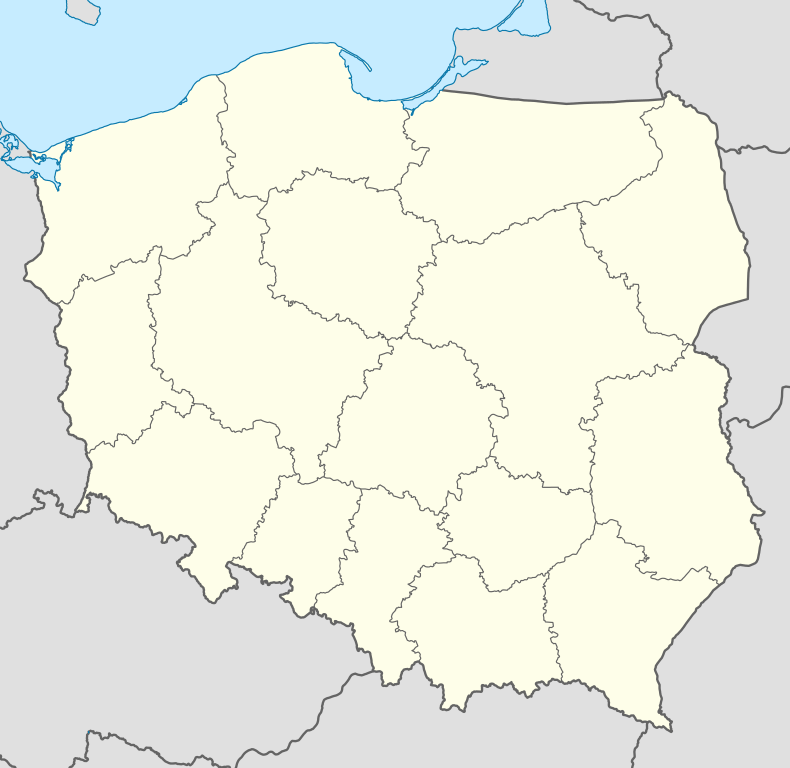Bełżec, Lublin Voivodeship
| Bełżec | ||
|---|---|---|
| Village | ||
|
Roman Catholic Church of Mary, mother of Jesus | ||
| ||
 Bełżec | ||
| Coordinates: 50°23′N 23°26′E / 50.383°N 23.433°E | ||
| Country |
| |
| Voivodeship | Lublin | |
| County | Tomaszów Lubelski | |
| Gmina | Bełżec | |
| Population | 2,723 | |
| Website | http://www.belzec.pl | |
Bełżec (pronounced [ˈbɛu̯ʐɛt͡s]) is a village in Tomaszów Lubelski County, Lublin Voivodeship, in eastern Poland. It is the seat of the gmina (administrative district) called Gmina Bełżec. It lies approximately 8 kilometres (5 mi) south of Tomaszów Lubelski and 114 km (71 mi) south-east of the regional capital Lublin.[1]
During World War II it was the site of the Nazi Belzec extermination camp.
Highlights
Already in 1887 Bełżec received rail connection to Lwów, one of the largest aglomerations in the region, via Rawa Ruska (now in western Ukraine). Bełżec became a full-fledged rail hub in 1916, with the brand new connection to Lublin via Rejowiec and a layover yard with a big engine-house.[2] During World War II, the village laid on the border of three new districts of General Government created by Nazi Germany: Distrikt Lublin with the capital in Lublin, Distrikt Krakau centered around Kraków, and District Galizien (created on 1 September 1941 soon after Operation Barbarossa) with the capital in Lwów. Some 1 million Polish Jews lived there in the so-called Lublin reservation. That's why, at a nearby Kozielsk Hill some 500 metres (1,600 ft) from the railway station, Nazi Germany built the first stationary gas chambers of the Final Solution to the Jewish Question. Between 430,000 and 500,000 people are believed to have been murdered at the Bełżec extermination camp between March and December 1942.[3]
The Bełżec station was bombed by a Soviet warplane on July 4, 1944, setting fire to munitions and explosives from the German military cargo train. The ensuing explosions and fires consumed over 50 nearby buildings along with the train station itself. Several railway workers were killed. The historic train station was never rebuilt. A new one was erected half-a-kilometre distance in postwar Poland.[2]
| Points of interest | ||||
|---|---|---|---|---|
|
References
- ↑ "Central Statistical Office (GUS) - TERYT (National Register of Territorial Land Apportionment Journal)" (in Polish). 2008-06-01.
- ↑ 2.0 2.1 "Kolej w Bełżcu (Railway in Bełżec)" (OVERVIEW AND GALLERY OF PHOTOGRAPHS) (in Polish). Wirtualny Bełżec. Retrieved February 26, 2013.
- ↑ MMPwB, Decyzja o podjęciu akcji 'Reinhardt', Muzeum-Miejsce Pamięci w Bełżcu, Oddział Państwowego Muzeum na Majdanku
External links
![]() Media related to Bełżec at Wikimedia Commons
Media related to Bełżec at Wikimedia Commons
| ||||||||||


